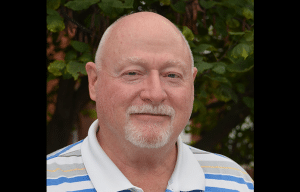Pioneers of the Illinois Frontier, part 2
Pioneers of the Illinois Frontier, part II
by Deborah Heal
(Read part 1 here if you missed it)
I’m not a historian (and I don’t think that it counts that my fictional character Merrideth Randall is a history professor at McKendree College) but I want you to know that I did my homework before I ever sat down to write my historical novel about Monroe County. Much of what I learned while I was researching for Once Again: an inspirational novel of history, mystery & romance, I couldn’t include, at the risk of turning my novel into a history textbook. But, all of it was important in my understanding of the topic I wanted to focus on—the tragedy that happened in James Garretson’s hayfield in the American Bottom on December 3, 1788.
It was the direct result of an event twenty-five years previously, England’s Proclamation of 1763 at the end of the French and Indian War. King George proclaimed the western lands off bounds for American colonists to calm the fears of the Indians, who worried that the colonists would drive them from their lands as they expanded westward.
I was surprised to find myself applauding that old tyrant for being concerned with Indian land rights. At the same time, I can see how disappointed the colonists must have felt with all that tempting land to the west of the crowded colonies. Some of them began to edge westward. But then, their monarch began sending Indian war parties to punish the settlers who had ignored his decree and to discourage others from getting any ideas about leaving the colonies. One of the king’s most diligent agents was the commander of the British Fort Detroit, Sir Henry Hamilton, who earned the nickname “The Hair Buyer.” He paid the Indians on a sliding scale with the scalps of children and women at the bottom and military-age men at the top.
King George’s bounty program escalated during the Revolutionary War years. In 1778, while the war raged on in the thirteen colonies, George Rogers Clark, a 26-year-old lieutenant colonel in the Virginia army, took it upon himself to do something about the situation in the West. With Governor Patrick Henry’s approval, Clark led a force of frontiersmen and captured the British forts at Vincennes, Kaskaskia, and Cahokia. It was a bloodless victory of tremendous importance, because it immediately got the British out of America’s back yard and after the war it gave the new nation claim to the northwest territory—Ohio, Indiana, Wisconsin, Michigan, and Illinois. The Treaty of Paris made arming the Indians and paying bounties for scalps illegal, so things were looking up for the settlers who had ventured out of the colonies.
At the end of the war, the bankrupt U.S. paid its veterans in land grants. Five of the men who had served under General Clark in the victorious campaign on the western frontier remembered the fertile soil of the Illinois Country and decided they would claim their grants there. In 1782, Captain James Moore led five families to Bellefontaine, where they made the first permanent American settlement in the Illinois Country. The men repaired the small fort the French had abandoned at Bellefontaine, and the five families began their lives on the American frontier.
One of the families that came with Captain James Moore was James and Isabelle Garretson and their children, Sarah, Samuel, Jane, James, and Isabella. The Combined History of Randolph, Monroe, and Perry Counties says this about James Garretson:
He was an honest, upright citizen, unambitious and unassuming, and always refused to hold public position. He was a brave man and an excellent soldier, and did his part toward protecting the settlements from the attacks of the Indians.
The history books don’t mention his wife’s bravery, but I figure Isabelle must have been one tough woman to have made the trip to the frontier while pregnant. On August 5, of that same year, she had a baby girl named Mary, the first American baby born in the Illinois Country.
After a while, James saw that the soil in the Bottom was even more fertile than that on the high ground at Bellefontaine. So he built a blockhouse fort for his family under the bluffs in the American Bottom in what would become Moredock Precinct. The blockhouse was a good idea, because unfortunately life was about to get much scarier and more dangerous for his family and the others there.
Stay tuned for Part III of Pioneers of the Illinois Frontier.
Heal’s historical novels are available on Amazon.com in paperback and Kindle. Learn more about the history behind the books on her website: www.deborahheal.com







